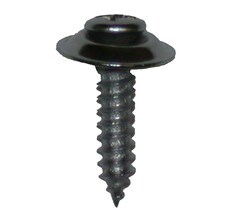Good news; I fixed the dimmer switch!! 

I'm pretty sure the root of the issue was dirty contacts. Disassembly and cleaning took care of that problem and the switched tested fine on the bench, but things went sideways when installed. It turns out I made an incorrect assumption about the mechanical function of the switch which resulted in an assembly error. I couldn't correct this issue until I did some careful diagnostics on the assembled switch. This lead me to the assembly error. Putting it together correctly results in the dimmer working fine!
As far as the door panels go, I won't respond to each posting, but should give a little background: I've been into AE86's for 20 years and had multiple cars. I have a huge collection of rare/obsolete parts I've been collecting over time, and have recently started selling off, but it is heavy on the mechanical stuff, and light on trim. The reason for this is that fifteen years ago, I thought saving a few pounds was cool, and had lexan windows, no carpet, burned ankles, and ringing in my ears! It turns out that I drove the car less and less because a stripped-out car is fatiguing, and little things like not having functional heat/defrost make a car really impractical to actually use. Over the past decade or so, I haven't seen any panels like mine that look much better. It saddens me that so many of these cars end up gutted or at least missing much of the original interior. 
I don't want to make it into a boulevard cruiser, but I do want to have my cake and eat it to. I've made it into a nice aesthetically restored driver with a tuned engine and suspension, just need a few details on the interior still. I have somewhere around 60-80 hours into interior restoration so far, between custom carpet install, plastic refurb and painting, console customization, making the seats as nice as I can, etc. I don't really want to ditch all that work and make it a track-only car at this point.
Since an American-market '85 GT-S was my first car, I have a strong vision of what it should be etched into my brain. A big part of my pride in this car, and my personal satisfaction with the end result requires matching that vision of what the interior should be. So yes, I could use door panels from Japan, or from an SR5, or from an '86-'87 car, and they would look 'good' to most people, but I wouldn't be happy. I think it is a bit like taking a Mach 1 Mustang and putting Grande parts in it because you can't find clean Mach 1 interior parts. It would work, but...
Regarding Tyler H, I really appreciate the effort with the link you posted, but the part number 67620-12860-12 is for a red/maroon SR5 panel. I'm looking for GT-S gray panels Right 67650-12780-03 and Left 67620-1A550-03. I've found recently that some dealers have gone to a web listing that has a mass of imported part numbers which bear no connection with their actual inventory. Lakeland Toyota, Mid-Atlantic Toyota, and a few others. I've done some online searches, gotten excited, placed an order, and gotten a really confused follow-up call a day later telling me that they reversed the charge on my card and wanted to know why I kept trying to order parts they've never stocked and which Toyota discontinued over ten years ago! Buyer beware...
So maybe the questions I meant to ask all along are:
If you replace fiberboard with stapled and glued vinyl upholstery with fiberglass or formed ABS, how do you attach the upholstery? I presume stapling won't work...so will just contact cement be sufficient to minimize shifting and lifting?
Can you get custom patterned vinyl made? Screen printed? Maybe some sort of transfer? The Toyota panels are a light gray pattern, with a dark gray strip painted across the top, and dark gray carpet across the bottom.
What does a high-end restoration shop do when a car comes in and needs replacement panels and upholstery that in a pattern that can't be bought off the shelf?
Here's the vinyl pattern I would need replicated:

Here's the backside of someone else's partially disassembled panel for those who are curious about the construction, but it should be noted that this is a late (kouki '86-'87) panel, which is upholstered with dated/cheesy-looking velour (yuck!) in two parts. My early (zenki '84-'85) panels are made from similar metal/rubber top part, and a slightly more shaped bottom fiberboard bottom, which are assembled first, and then upholstered with one piece of vinyl afterward.











































